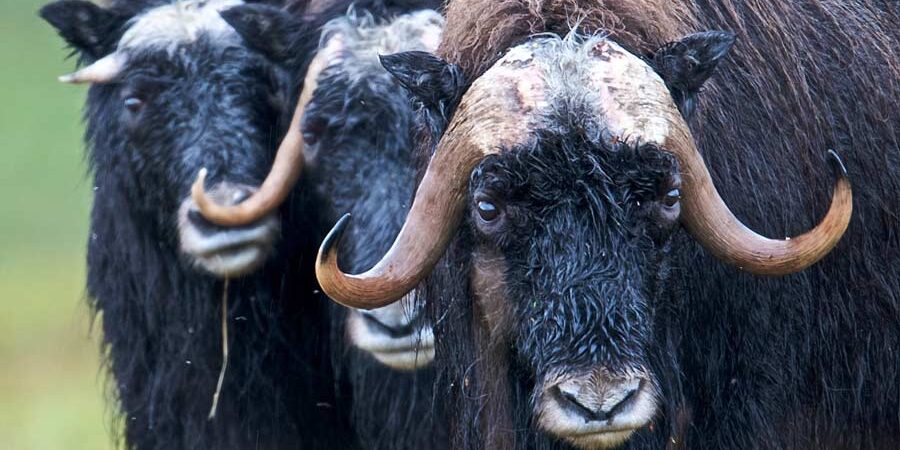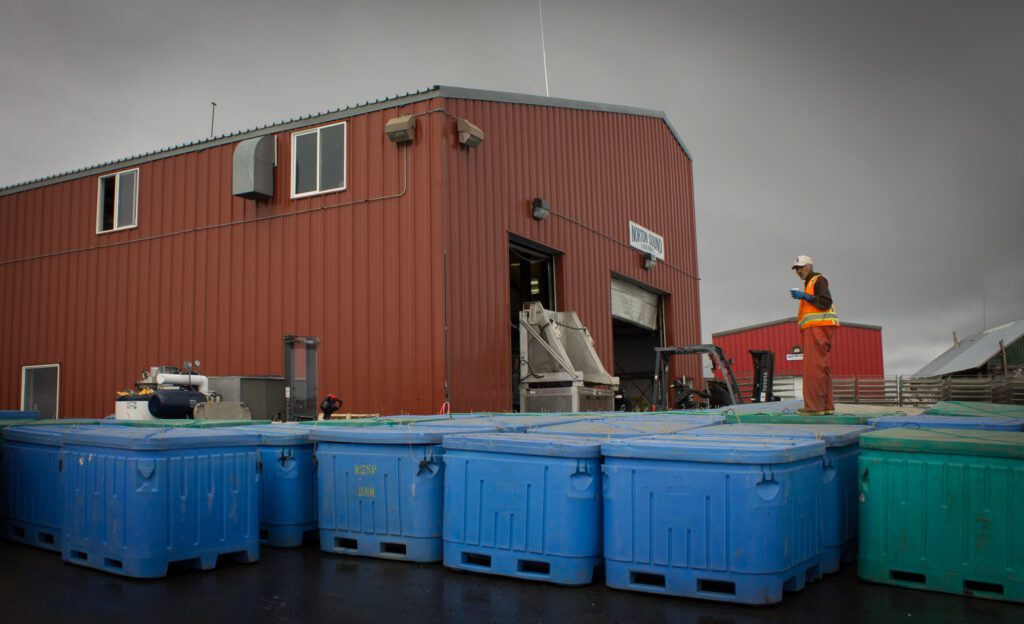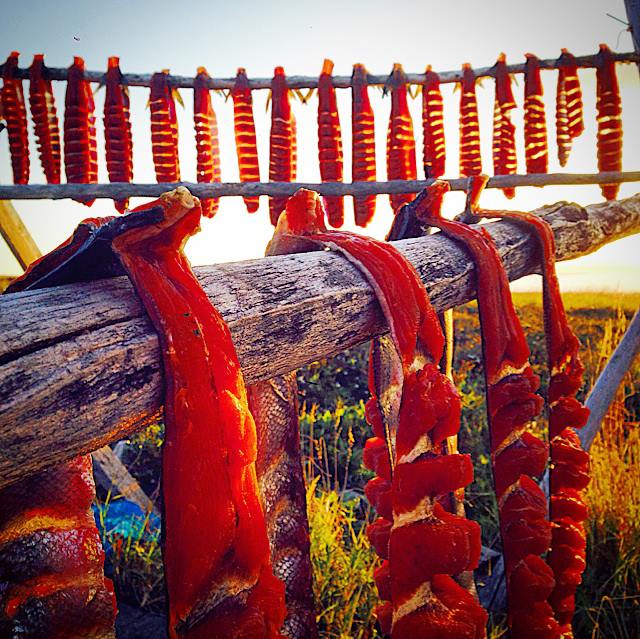Over the last five months, multiple sled dogs in Nome were attacked by musk oxen in at least four separate incidents. In October, one of the attacks resulted in the death of a dog, and now, people in the community, including the pet owner, are questioning what can be done to prevent further loss of life.
Long-time Nome resident Vickie Erickson has become accustomed to dealing with musk oxen near her home in the Icy View neighborhood. Erickson says over the last few years, she has lost four dogs to musk ox attacks:
“Our dogs are family; they are not anything other than just family. We spend hours a day with them; Mitch walks them two or three hours every night; no matter what the weather, he’s with them. And we’ve tried everything. We’ve tried fences; we’ve tried the dog pens. I saw one Facebook post: ‘well, why didn’t the dumb dog run away?’. Well, you know, there are City rules, and dogs have to be chained, as they should be; they shouldn’t be allowed to run around free. But that makes them, certainly, a target.”
During Erickson’s latest encounter with musk oxen on October 3rd, which she describes as a traumatic experience, Erickson’s family dog for six years, Bart, was fatally wounded.
“I believe it was a Tuesday afternoon, at 4 o’clock I was at work, and I got a call from my son, saying, ‘hurry, you need to get home, the musk ox are all over our place, and they have attacked our dog Bart and I don’t think she’s going to make it.’”
Erickson says she then called Nome Police Department, and the dispatcher told her that the Alaska Department of Fish and Game (ADF&G) would send someone to respond to the incident. Alaska Fish and Game biologist in Nome, Bill Dunker, recalled that the responding ADF&G employee did not take action against the offending musk ox in this incident.
“Of the four instances where we had musk ox that attacked dogs, two of those animals were shot and killed in Defense of Life and Property, one of those animals was removed by the Department, and the fourth animal we were unable to identify, and that animal or those animals in the area did not continue to exhibit aggressive behavior, and so no further action was taken in that instance.”
When it comes to killing wild game animals outside of hunting seasons, the Defense of Life and Property or DLP regulations, under Alaska State law, dictate what can and can’t be done.
For example, a DLP report must be completed after an animal like a musk ox is killed; then, the meat must be salvaged, and it’s given over to ADF&G, which then donates it to those in need. Dunker elaborates:
“In an instance where an animal poses a threat to somebody’s safety or their property, before killing the animal, they take all of their means that are practical in a given situation to deter that animal. So in the event that all other means, practical, don’t successfully deter that animal, and it continues to pose a threat to public safety, at that point they (the public) can legally harvest or kill that animal.”
Dunker says various means used to deter musk oxen in the past have included inflatable bear decoys, water hoses, and rubber bullets. Fish and Game has even experimented with bear-urine-scented wicks. Most of these efforts have proved to be unsuccessful.
At the end of the day, the best deterrent Dunker recommends is to use some sort of protection or enclosure for outside dogs, as a barrier between them and musk oxen.
“For household pets, a securely anchored, free standing chain-link enclosure would be a good choice for keeping animals safe around your home or something like that, and certainly some type of fencing for larger areas, be it high-tensile or chain-link, those are a couple of good alternatives that people can use to protect their animals.”
Before her dog Bart was attacked for the third and final time, Erickson says she and her husband took several preventative steps, including using different types of barriers:
“We were out of pens, and fences didn’t hold them out, pens didn’t hold them out, and this time, Mitch had put a bunch of equipment — it looks terrible down there, he put a Jeep down there, we had connex vans, the green house, a smoker, an outhouse, four-wheelers, snow machines — all around these dogs, just trying to make some kind of barrier. And one (musk ox) got in, and that was all she wrote.”
Musk oxen tend to attack dogs because they perceive dogs as wolves, but during the fall season, when musk oxen are in their rut, Dunker says they are typically even more aggressive.
When asked why these fatal encounters between dogs and musk oxen have been happening more frequently summer after summer in Nome, Dunker said he could not speculate on that.
Wildlife Trooper Maggie Stang with Alaska State Troopers in Nome sometimes responds to musk oxen incidents on her own or alongside Fish and Game employees. She has observed musk oxen blocking portions of the runway at the local airport, and in one incident this summer, a bear killed a musk ox on the runway, which created an obstacle for aircraft. Stang believes musk oxen could also be a threat to human lives in situations like these, not just out in Icy View.
Erickson says she knows people, including herself, who have been threatened and charged by a musk ox before. She suggests that further action be taken, like removing all of the musk oxen from within Nome city limits, before a musk ox claims human lives as well.
“I’m so upset about the loss of my dog that I really don’t care if they are herded out, airlifted out, or otherwise. I don’t think they should be allowed to be so well protected within the City limits that they put everybody else at risk. For me, next year I think I’m going to take the Women on Target class and become very familiar with using my gun, and do the best I can to protect myself on my walks and my last remaining dog I have.”
So far, the Alaska Department of Fish and Game has not proposed any further action regarding the regulation of musk oxen interactions with people and property.
Erickson says, for now, she and her family won’t adopt any more dogs in order to prevent more animals from being killed by musk oxen.
Image at top: photo credit: Bering Land Bridge National Preserve.







